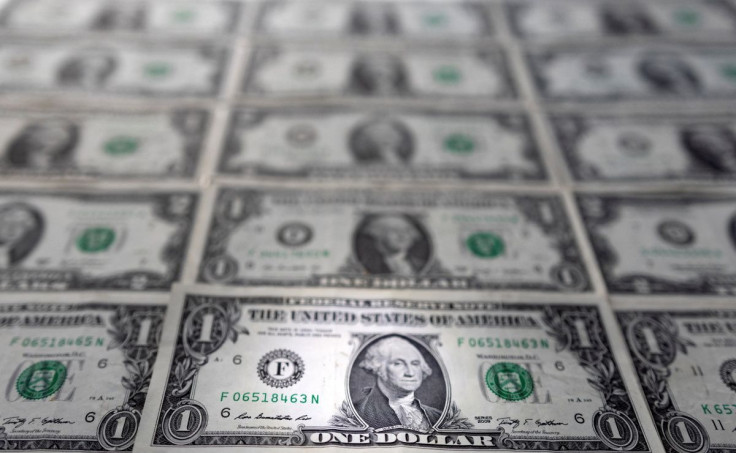Dollar Boosted By Safety Bid On Rising Recession Fears

Pessimism about the global economic outlook boosted demand for the safe-haven U.S. dollar on Friday while the Australian dollar, a proxy for global growth, tumbled to a two-year low.
Rampant inflation and a rush by central banks to raise rates and stem the flow of cheap money has fueled sell-offs across markets and lifted assets seen as safer bets.
"When people get worried they still buy dollar assets," said Joseph Trevisani, senior analyst at FXStreet.com in New York.
The dollar gained on Friday even as concerns about an economic downturn sent benchmark 10-year U.S. Treasury yields to one-month lows. [US/]
The greenback is being swayed between concerns that the Federal Reserve will continue to hike rates aggressively to blunt soaring price pressures, and the likelihood that this will hurt the economy.
"You have weakening rates against the dollar competing against fear of a global recession and enormous amounts of debt and all sorts of other problems," Trevisani said.
Data on Friday showed that U.S. manufacturing activity slowed more than expected in June, with a measure of new orders contracting for the first time in two years, signs that the economy was cooling.
Expectations for interest rate hikes by U.S. central banks have fallen, with traders now pricing in a peak of 3.32% in March, down from previous estimates of around 4% before the Fed's June 14-15 meeting. The Fed's benchmark rate is currently 1.58%.
The dollar index gained 0.36% against a basket of currencies to 105.12. It is holding just below a 20-year high of 105.79 reached on June 15.
The euro fell 0.56% to $1.0424. The single currency reached a five-year low of $1.0349 on May 13.
Euro zone inflation hit another record high in June, while manufacturing production in the bloc fell for the first time in two years.
The European Central Bank is expected to raise interest rates this month for the first time in a decade, although economists are divided on the size of any hike.
Risk-sensitive currencies underperformed. The Australian dollar fell as low as 67.64 cents, the weakest since June 2020.
"It's a risk-off start to the second half of the year with equities and commodities down, so the dollar is stronger pretty much across the board," said Kenneth Broux, an FX strategist at Societe Generale in London.
The Reserve Bank of Australia decides policy on Thursday, and markets expect a half point hike to its key rate.
Sterling reached a two-week low of $1.1976 a day after official data showed a record shortfall in Britain's current account deficit in early 2022.
The dollar dipped 0.37% against the Japanese yen to 135.26. The Japanese currency hit a 24-year low of 137.01 per dollar on Wednesday.
In cryptocurrencies, bitcoin resumed its slide lower, slipping 2.63% to trade just above $19,400.
========================================================
Currency bid prices at 3:00PM (1900 GMT)
Description RIC Last U.S. Close Pct Change YTD Pct High Bid Low Bid
Previous Change
Session
Dollar index 105.1200 104.7500 +0.36% 9.886% +105.6400 +104.7500
Euro/Dollar $1.0424 $1.0483 -0.56% -8.30% +$1.0486 +$1.0366
Dollar/Yen 135.2600 135.7700 -0.37% +17.50% +135.9800 +134.7500
Euro/Yen 140.98 142.26 -0.90% +8.18% +142.4300 +139.8000
Dollar/Swiss 0.9598 0.9549 +0.56% +5.26% +0.9641 +0.9548
Sterling/Dollar $1.2096 $1.2180 -0.69% -10.56% +$1.2173 +$1.1976
Dollar/Canadian 1.2887 1.2873 +0.11% +1.93% +1.2966 +1.2867
Aussie/Dollar $0.6817 $0.6903 -1.24% -6.21% +$0.6903 +$0.6764
Euro/Swiss 1.0003 1.0010 -0.07% -3.53% +1.0042 +0.9979
Euro/Sterling 0.8615 0.8607 +0.09% +2.56% +0.8678 +0.8606
NZ $0.6213 $0.6247 -0.56% -9.24% +$0.6246 +$0.6150
Dollar/Dollar
Dollar/Norway 9.9235 9.8415 +1.25% +13.12% +9.9980 +9.8430
Euro/Norway 10.3458 10.3193 +0.26% +3.32% +10.3993 +10.3077
Dollar/Sweden 10.3040 10.2189 +0.22% +14.26% +10.3757 +10.2121
Euro/Sweden 10.7415 10.7174 +0.22% +4.96% +10.7817 +10.7173
© Copyright Thomson Reuters {{Year}}. All rights reserved.





















